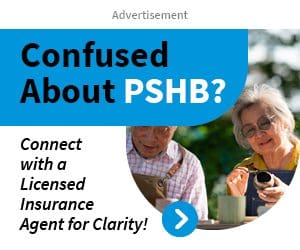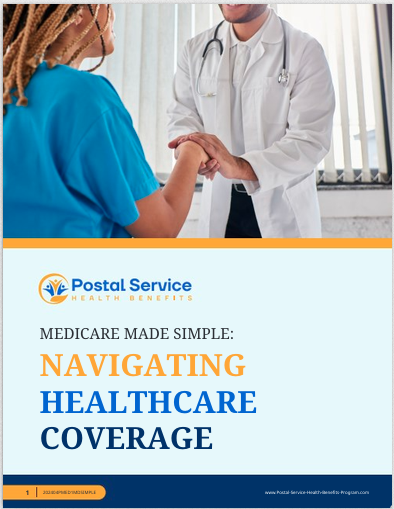Key Takeaways:
- Eligibility for the Postal Service Health Benefits (PSHB) program is broader than many realize, encompassing various federal employees and their families.
- Understanding specific requirements and enrollment periods can help you make informed decisions about your health coverage.
Think You Don’t Qualify for PSHB? Here’s the Eligibility Info You’ve Been Looking For
Many people assume they don’t qualify for the Postal Service Health Benefits (PSHB) program. However, eligibility for PSHB is not as narrow as it might seem. Whether you are an employee of the United States Postal Service (USPS), a retiree, or a family member, it’s essential to know the various qualifying criteria that could open the door to health benefits under this program. Here’s the breakdown of what you need to know.
What is the PSHB Program?
The Postal Service Health Benefits (PSHB) program is a health coverage initiative designed specifically for postal employees and retirees. It functions under the larger Federal Employee Health Benefits (FEHB) program but is tailored for the unique needs of USPS employees. This program offers a range of coverage options to ensure that eligible participants have access to affordable healthcare.
While PSHB closely mirrors the FEHB program in many aspects, its specific focus on postal workers makes it slightly different in terms of eligibility and plan offerings. Understanding whether you qualify and how to navigate this system is crucial for making informed decisions about your healthcare coverage.
Are Postal Employees Automatically Eligible for PSHB?
Most USPS employees are eligible for the PSHB program, but the key to ensuring your eligibility is based on your employment status. Full-time employees of the USPS are typically automatically eligible to enroll in the PSHB program during their employment or retirement.
However, part-time employees or those in non-career positions may face different eligibility criteria. For instance, while certain non-career employees may still qualify for health benefits, their access to PSHB could be limited or contingent on factors such as length of service or other employment conditions. It’s essential for part-time and non-career employees to check the specific details related to their position.
What About Retirees?
Retirees from the USPS are generally eligible for PSHB coverage, assuming they were enrolled in the FEHB program during their last five years of employment. This stipulation ensures that retirees continue to have access to the same quality of healthcare that they had while working.
Additionally, retirees who are enrolled in Medicare Part A and Part B may see further advantages by integrating their PSHB plan with Medicare, potentially reducing out-of-pocket expenses. It’s important for retirees to explore their options during open enrollment periods to make the best decisions for their healthcare needs.
Can Family Members Be Covered Under PSHB?
One of the more inclusive aspects of the PSHB program is that it extends eligibility to certain family members of USPS employees and retirees. Immediate family members, such as spouses and dependent children under the age of 26, are typically eligible for coverage under the employee’s or retiree’s PSHB plan.
It’s worth noting that dependent children over the age of 26 with specific disabilities may also be eligible for continued coverage. Ensuring that your family members meet these criteria can help provide peace of mind that their healthcare needs will be met.
What If You’re Transitioning from FEHB to PSHB?
If you are a USPS employee already enrolled in the Federal Employee Health Benefits (FEHB) program and are transitioning to PSHB, the process is generally straightforward. USPS employees transitioning from FEHB to PSHB do not need to re-enroll entirely. During open enrollment, employees will have the opportunity to switch to a PSHB-specific plan if they choose to do so.
It’s important to review the differences between FEHB and PSHB plans, as PSHB may offer benefits that are better tailored to the needs of postal workers. Consulting with a licensed insurance agent or reviewing plan details during the enrollment period can help clarify these options.
What Are the Requirements for PSHB Enrollment?
To enroll in PSHB, eligible USPS employees, retirees, and their family members must adhere to specific enrollment periods. These open enrollment windows typically occur once per year, but special enrollment periods may be available in the event of significant life changes, such as marriage, the birth of a child, or retirement.
Missing an open enrollment period can have serious consequences, as it may limit your ability to access healthcare until the next available window. Therefore, staying on top of these dates is crucial to maintaining uninterrupted health coverage.
What If You Missed the Open Enrollment Period?
If you miss the annual open enrollment period, don’t panic. You may still be eligible to enroll during a Special Enrollment Period (SEP) under certain circumstances. Major life events such as getting married, having a child, losing other health coverage, or moving can trigger an SEP. This allows you to enroll or make changes to your existing plan outside the usual enrollment window.
If you believe you qualify for an SEP, be sure to act quickly. SEPs usually have time limits, and the clock starts ticking from the date of the qualifying event. Always have your necessary documentation on hand to expedite the process.
Does Medicare Impact PSHB Eligibility?
For retirees, the intersection of PSHB and Medicare is a key consideration. Those who are 65 or older are eligible for Medicare, but that doesn’t mean they can’t also participate in PSHB. In fact, many retirees choose to coordinate their PSHB coverage with Medicare Part A (hospital insurance) and Part B (medical insurance). This coordination can help reduce healthcare costs by covering gaps in Medicare’s coverage.
However, it’s important to be aware of the potential interaction between Medicare and PSHB plans. For instance, if you decline Medicare Part B, some PSHB plans may increase your cost-sharing amounts. To avoid unexpected expenses, carefully review your options before making any decisions.
How Do You Verify Your PSHB Eligibility?
Verifying your eligibility for PSHB is relatively straightforward. Current USPS employees can typically confirm their eligibility by consulting with their human resources department. Retirees, on the other hand, may need to consult their retirement benefits office to ensure that they meet all the requirements for continued PSHB coverage.
Additionally, USPS employees and retirees can use online portals provided by the USPS or their insurance providers to check eligibility, review plan details, and initiate enrollment. Having this information readily accessible ensures you can make timely and informed decisions about your healthcare.
How Can You Maximize Your PSHB Benefits?
Maximizing your PSHB benefits comes down to making informed choices. First, ensure you understand all the available plan options during open enrollment, as choosing the right plan can lead to significant savings and better coverage for you and your family.
Also, be sure to take advantage of wellness programs and preventive services often included in PSHB plans. Many plans offer screenings, vaccinations, and other services that can help you maintain your health and avoid costly treatments down the line.
Lastly, if you are a retiree coordinating PSHB with Medicare, understanding how these two programs interact can save you money and reduce gaps in coverage. Speak with a licensed insurance agent to help navigate these choices.
Ready to Take the Next Step?
Whether you’re currently a USPS employee, a retiree, or a family member, understanding the eligibility requirements for PSHB can make all the difference in securing your healthcare. If you believe you qualify, the next step is to gather your documents, mark your calendar for the next open enrollment period, and review your options carefully.
For those who need further assistance, connecting with a licensed insurance agent or visiting official USPS resources can provide the guidance you need to make confident decisions about your health coverage.
Contact Information:
Email: [email protected]
Phone: 7145556789






